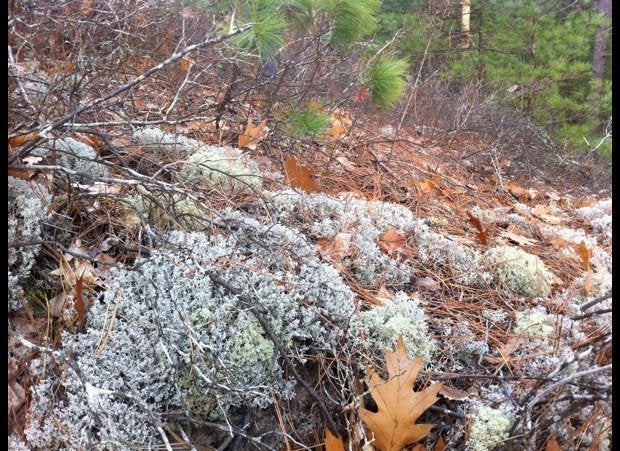Wanting to take advantage of the last bit of fall in the Midwest I took a trip in to the woods and found myself spending most of my time looking down. I was mesmerized by the variety of moss on the woodland floor creeping its way across the trees and rocks. Plush and fuzzy, the various mosses emerged in vivid contrast with the late fall sky and leafless woody plants. Since mosses obtain all their nutrients from the air and do not have true roots it is easy for them to flourish without much effort. Hypnum, Dicranum & Leucobryum just to name a few, gave the forest a gentle flood of life amongst the winter decay. Peaceful and serene this landscape has given me inspiration to dream about all winter. This past year I noticed that moss had naturally been growing between the stones in my courtyard and I have been letting it spread on its own. I'm looking forward to next spring when I can foster that moss to take over even more space in my garden. And to hold me over until Spring I'm planning an indoor moss project.
I am not suggesting that you harvest moss from your local forest preserve but instead take advantage of the moss that you might already have growing in your garden. I harvested a little corner of moss from my courtyard and plan on making a slurry with it to plant in some of my indoor terrariums. A slurry is a method in that is used to multiply the moss spore to cover more area. Most slurry recipes are a combination of one part live moss to four parts water (or beer) and four parts buttermilk (or yogurt). Get the blender out and mix the moss and half of the water then slowly add the buttermilk and the rest of the water -- once blended it is ready to use. You can plant it in your indoor terrariums right away. If you are planning to plant outside, do a soil test first -- moss likes to have an acidic soil with a PH between 5.0 to 6.0. Moss plants are not that much work as long as you follow a couple of rules. The area you plant should have a firm soil bed, adequate shade, and be clean of debris. Most importantly do NOT let the area dry out until your moss is established. If you don't have a backyard source of moss you can purchase transplanted moss to start anew.
Pre-harvested moss is typically available by the bag at your local garden center. Suppliers of bagged moss are held to strict governmental standards to promote sustainable harvest practices. Some of these standards include a limited time frame to harvest, or years before someone is allowed to harvest in the same area, and limitations on volume allowed to be harvested. Inquire to see whether or not the moss you are purchasing has been treated or preserved. If the moss has been preserved then rehydration and growth is not likely. You can use preserved moss as a decorative soil covering with the major benefit being that you do not have to worry about care. If it has not been preserved then you should be able to rehydrate and grow it -- its alive! its alive!
Advertisement
